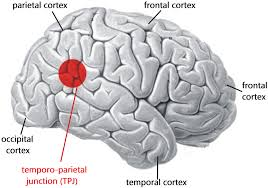Why Do Our Senses Turn Off? The Fascinating Science of Neural Adaptation by Isabella Wang
- Annie Z
- Oct 16, 2024
- 3 min read
Ever wonder why the water in a swimming pool stops feeling cold after a while? Why does the smell of food in a restaurant fade over time? Why does an itch go away after we ignore it? These are all examples of neural adaptation, or our body’s ability to block out persistent stimuli, or signals, in order to better adjust to the environment.
Neurons are designed to detect changes around us. When we touch something, a special type of neuron, called a mechanoreceptor, detects the pressure on our skin and sends an electrical signal up the nerve for our brain to interpret. However, if we rest our hand on a surface without moving, the mechanoreceptor is constantly sensing the same pressure, so, over time, it becomes unable to detect any changes worth sending a signal for [1]. As a result, our hand no longer feels the surface below, giving the illusion of “nothingness.”
This neural adaptation to the environment is actually a way for our brain to establish a new baseline for the senses. Going back to the example of the food smell fading in a restaurant, it’s actually our brain trying to tell the body that “you’ve been here for a while, let’s try sensing for things other than the smell of yummy pasta.” The smell of yummy pasta becomes the default, baseline environment, and anything other than the pasta would trigger the receptor, in this case an olfactory receptor neuron, to alert the brain of changes. In fact, the absence of pasta would be enough of a change to trigger an alert, which is why we can smell “fresh air” despite it being an unscented gas [2].
Why Does the Brain Bother?
It’s hypothesized that neural adaptation allows our nerves to detect a wider range of stimuli by shifting their scope of detection. When the baseline conditions are adjusted according to the environment, our receptors are able to better differentiate between more extreme stimuli. For instance, our eyes adjust the baseline brightness during the night to be lower than during the day, which allows us to perceive different shades of gray in the dark and not simply see everything as a black mass [3].
The Biology Behind Tuning Out
The excitatory action potentials (learn more about action potentials from our blog post here!) triggered by the initial stimulus become gradually diminished by inhibitory potentials after too much stimulation to the nerve. The electrical signals sent by neurons rely on the flow of charged ions. When first receiving a stimulus, the receptor neuron has no choice but to send excitatory neurotransmitters up the nerve, which causes a massive release of ions, in turn causing a wave of action potentials that alert your brain of changes. After the initial shock though, inhibitory neurotransmitters are released, which close these ion channels and prevent any more action potentials from triggering [4]. The longer a stimulus remains, the more these inhibitory neurotransmitters are released.
The inside of the neuron is also a self-regulating system. The same ions that trigger action potentials also stop the triggering of more action potentials by inhibiting the intracellular production of cyclic AMP, a vital messenger molecule responsible for opening ion channels in the neuron [5]. Neural adaptation essentially takes advantage of this self-regulation and extends it for as long as the stimulus is present.
Thank You, Brain!
There are so many fascinating mechanisms that our body uses to help us experience the world to the fullest. Neural adaptation is one of those mechanisms, and it prevents us from constantly being in pain while also allowing us to detect the subtle joys of life, like the faint smell of cookies coming from the oven and the quiet chirping of the birds on a summer morning.
Works Cited
[1] Nikolić, D. (2016). Neural Adaptation - an overview | ScienceDirect Topics. Sciencedirect. https://sciencedirect.com/topics/medicine-and-dentistry/neural-adaptation.
[2] Kadohisa, M. (2005). Olfactory Cortical Adaptation Facilitates Detection of Odors Against Background - PMC. Ncbi. https://ncbi.nlm.nih.gov/pmc/articles/PMC2292127/.
[3] Alexander, K. (2010). Dark Adaptation - an overview | ScienceDirect Topics. Sciencedirect. https://sciencedirect.com/topics/agricultural-and-biological-sciences/dark-adaptation.
[4] Dougherty, D. (2005). Computational model of the cAMP-mediated sensory response and calcium-dependent adaptation in vertebrate olfactory receptor neurons - PMC. Ncbi. https://ncbi.nlm.nih.gov/pmc/articles/PMC1180786/.
[5] Leinders-Zufall, T. (1999). Impaired Odor Adaptation in Olfactory Receptor Neurons after Inhibition of Ca21/Calmodulin Kinase II. Ncbi. https://ncbi.nlm.nih.gov/pmc/articles/PMC6783107/pdf/ns1914rc19.pdf.





Comments